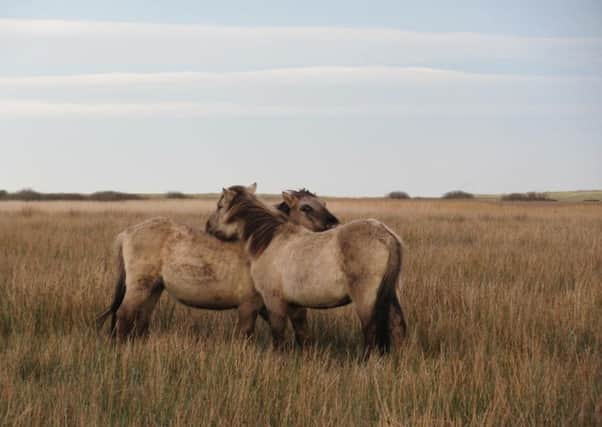Hungry horses help endangered meadows bloom again


Grasslands and meadows were once a major feature of the British countryside, but 97 per cent have disappeared since the 1930s.
Millions of acres were ploughed up to grow cereals during the Second World War, sparking a decline that would continue over the next 40 years and result in a total loss of 7.5 million acres across the country.
Advertisement
Hide AdAdvertisement
Hide AdScotland has lost more than two-thirds of lowland meadows and grasslands that were once rich in native wildflowers such as eyebright, devil’s-bit scabious, field scabious and lesser butterfly-orchid.
Now a nationwide project is attempting to reverse the trend, targeting 15,000 acres across the UK. Save Our Magnificent Meadows, is a major collaboration between nature organisations including Plantlife, RSPB and Scottish Natural Heritage, with backing from the Heritage Lottery Fund.
The marshes at Loch of Strathbeg in Aberdeenshire, the UK’s largest dune loch, had become overgrown by willow scrub and soft rush. So experts brought in a herd of 33 untamed Konik ponies – native to Poland – to provide a natural mowing service to control the coarse grasses. The animals have GPS collars that monitor their activities, and Quadcopter drones are being used to survey the 28-acre Mosstown Fen site and record changes in the vegetation.
Richard Humpidge, RSPB’s coastal reserves manager for north-east Scotland, is leading the work at Mosstown Fen. He said: “Soft rush had grown to dominate quite large parts of the fen meadow. In places it can be more than 90 per cent cover. We want to knock that back to below 50 per cent. We’re cutting quite large areas of the rush, then the ponies graze the regrowth, keeping it nice and short.”
Results suggest efforts are paying off, with some rare plants making a comeback. Lesser butterfly orchid has declined by nearly two thirds across the UK, but numbers on the site have already increased by more than 50 per cent in 12 months.
Birds such as snipe and the endangered curlew are also benefitting from the project.
Members of the public can see the results at Mosstown Fen during National Meadows Day next Saturday. Events are also being staged at Williamswood Farm in Dumfriesshire, Monifieth Community Council Meadow in Angus and Weem Meadow in Perthshire.
Plantlife project manager Claire Parton says the celebrations will put local meadows “on the map”. “We hope they will act as a catalyst to raise awareness of this increasingly rare and fragile part of our natural heritage,” she said.